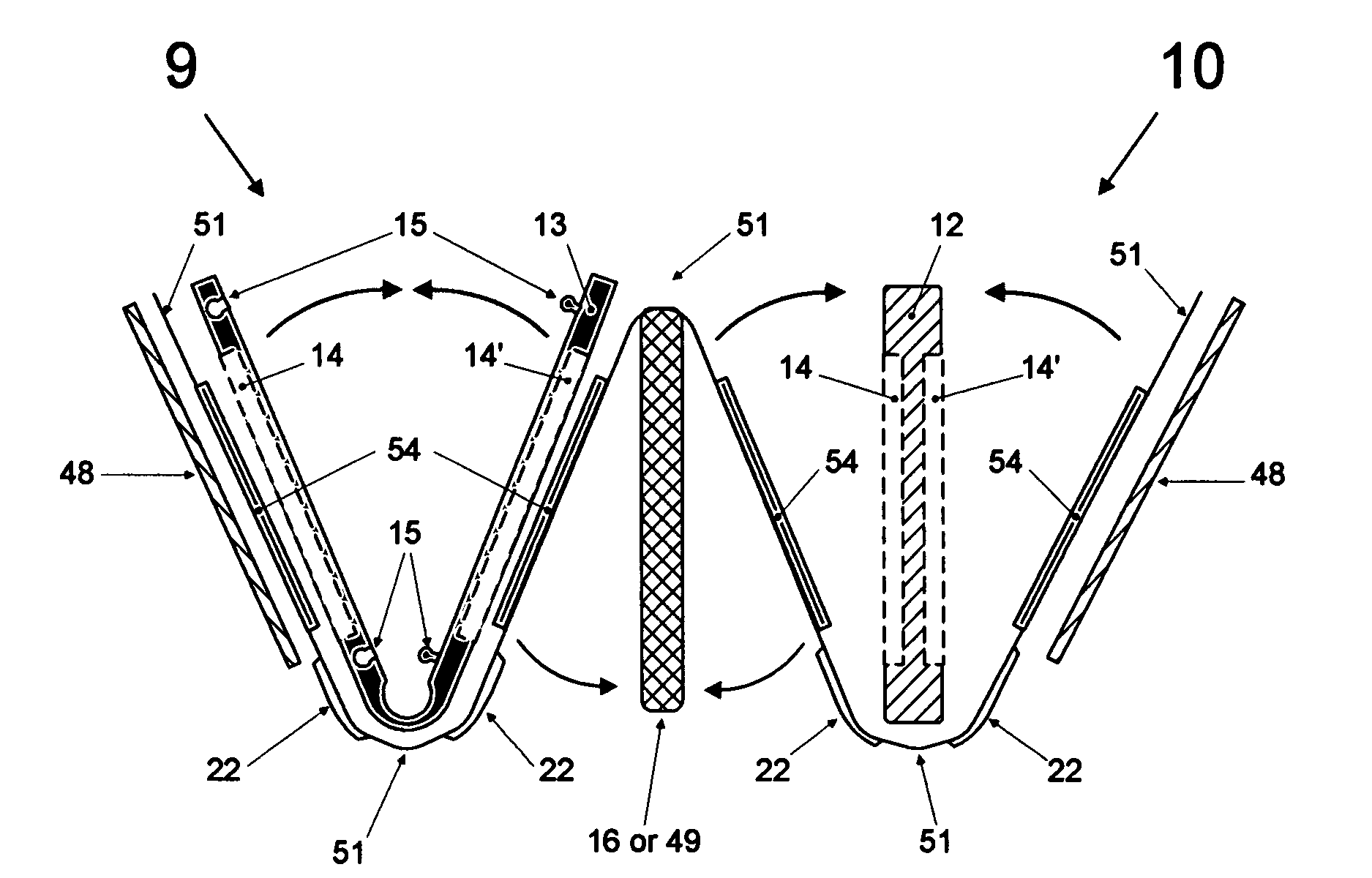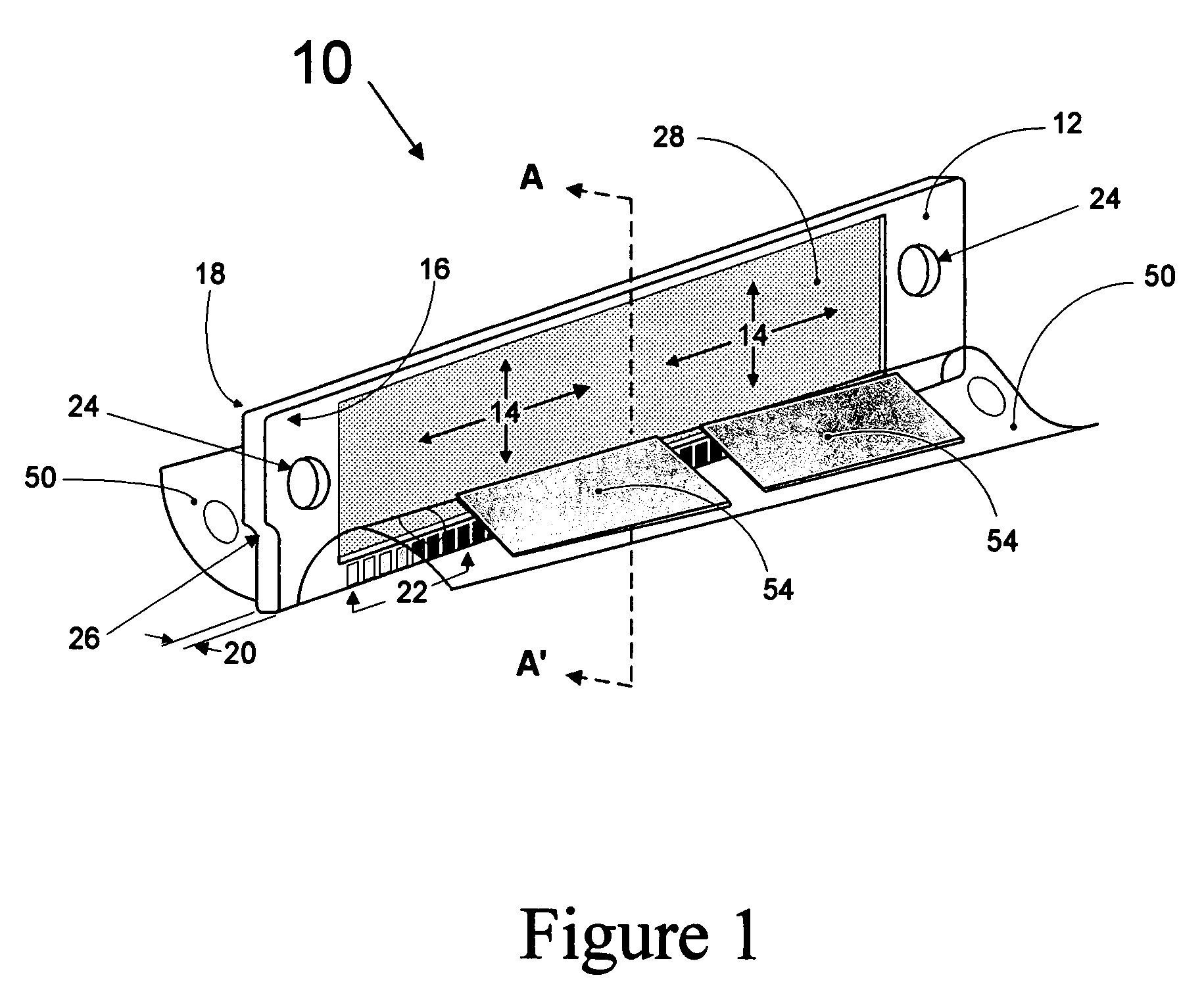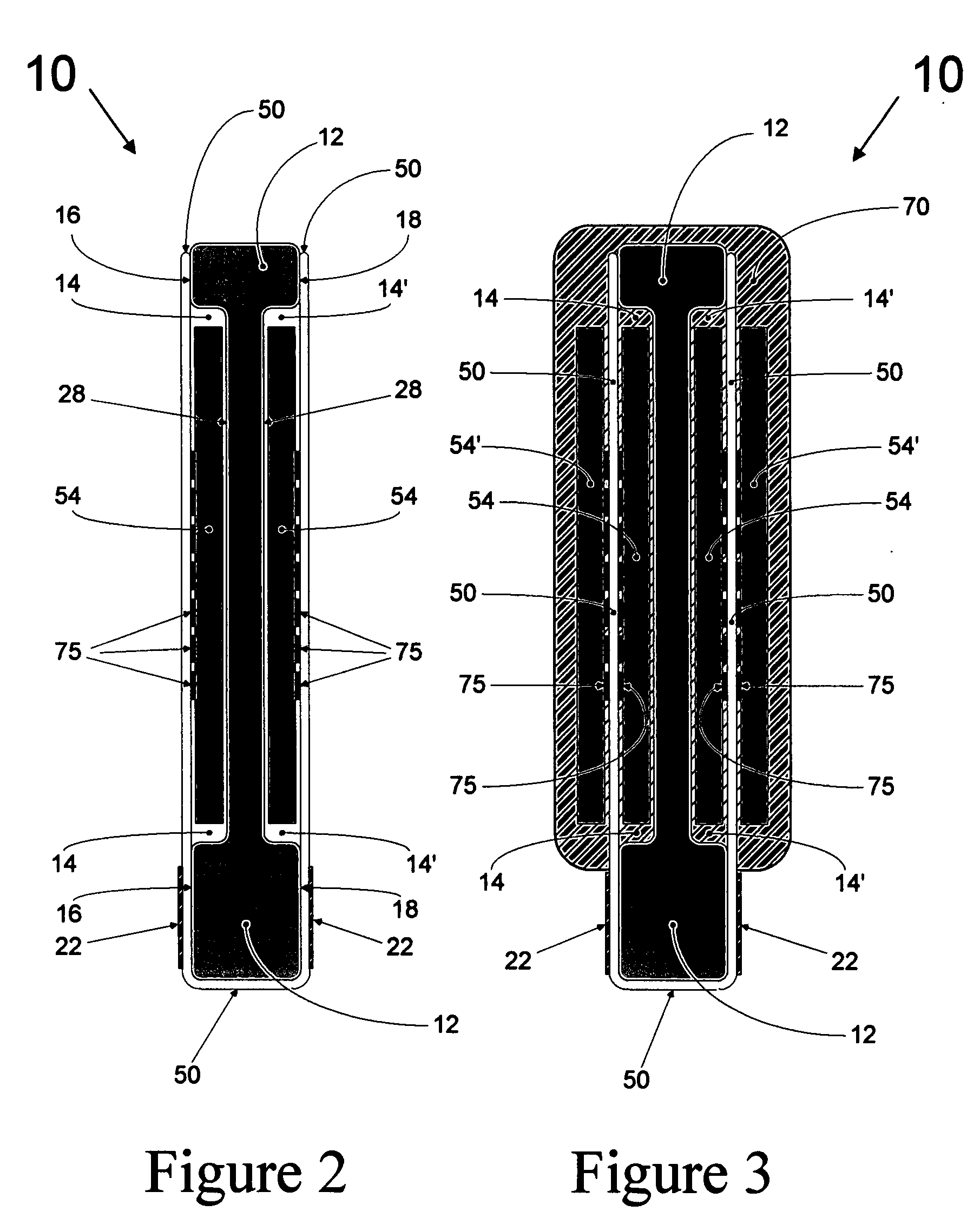Thin multichip flex-module
a multi-chip, flexible technology, applied in the direction of printed circuit manufacturing, printed circuit construction, electrical apparatus construction details, etc., can solve the problems of reducing manufacturing costs, reducing manufacturing efficiency, and limiting technology to low volume, so as to improve manufacturing efficiency and improve component and interconnect density. density
- Summary
- Abstract
- Description
- Claims
- Application Information
AI Technical Summary
Benefits of technology
Problems solved by technology
Method used
Image
Examples
Embodiment Construction
[0048]The following embodiments introduce new construction concepts and assembly methods directed at providing lower-cost, higher-density, packaging solutions for next generation electronic module products. The module embodiments disclosed herein may be broadly classified as “Multichip Modules” in that the semiconductor devices illustrated are preferably in a “bare-die” or “chip” form. It will be understood, however, that in some instances packaged die may be used instead of bare die, depending on design objectives.
[0049]The electronics industry presently recognizes three main types or divisions of multichip modules based on the type of interconnecting substrate upon which the bare-die or chips are assembled: MCM-D (deposited thin film), MCM-C (ceramic), and MCM-L (laminate). MCM type-L refers to conventional epoxy / glass, printed circuit board laminate substrates and comes closest, of the three categories, for classifying the present invention. Epoxy / glass PCBs, however, are general...
PUM
 Login to View More
Login to View More Abstract
Description
Claims
Application Information
 Login to View More
Login to View More - Generate Ideas
- Intellectual Property
- Life Sciences
- Materials
- Tech Scout
- Unparalleled Data Quality
- Higher Quality Content
- 60% Fewer Hallucinations
Browse by: Latest US Patents, China's latest patents, Technical Efficacy Thesaurus, Application Domain, Technology Topic, Popular Technical Reports.
© 2025 PatSnap. All rights reserved.Legal|Privacy policy|Modern Slavery Act Transparency Statement|Sitemap|About US| Contact US: help@patsnap.com



